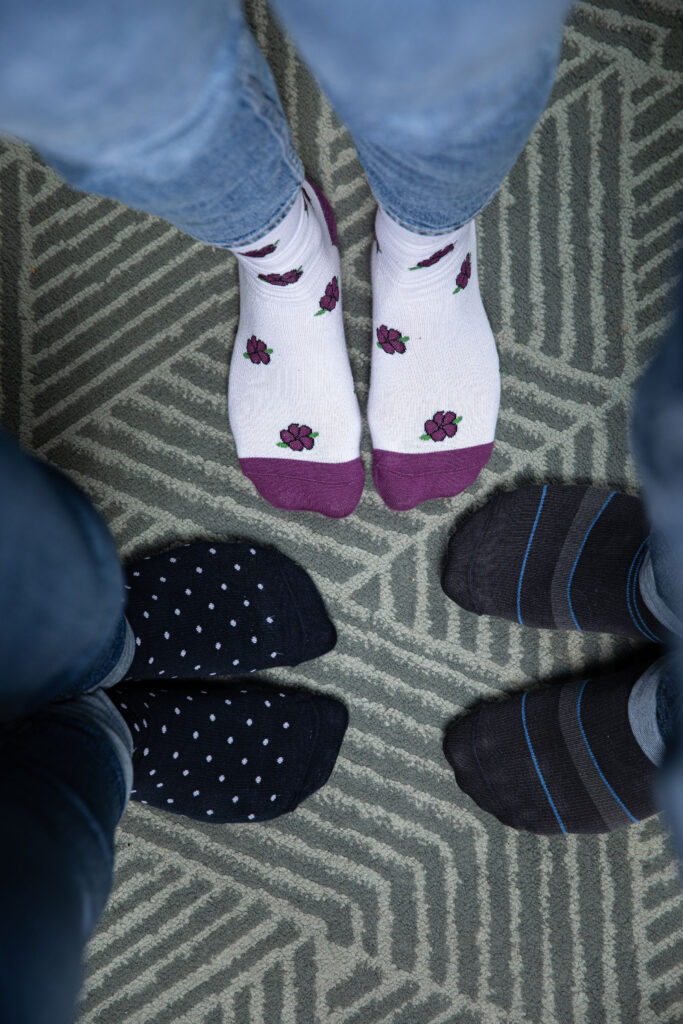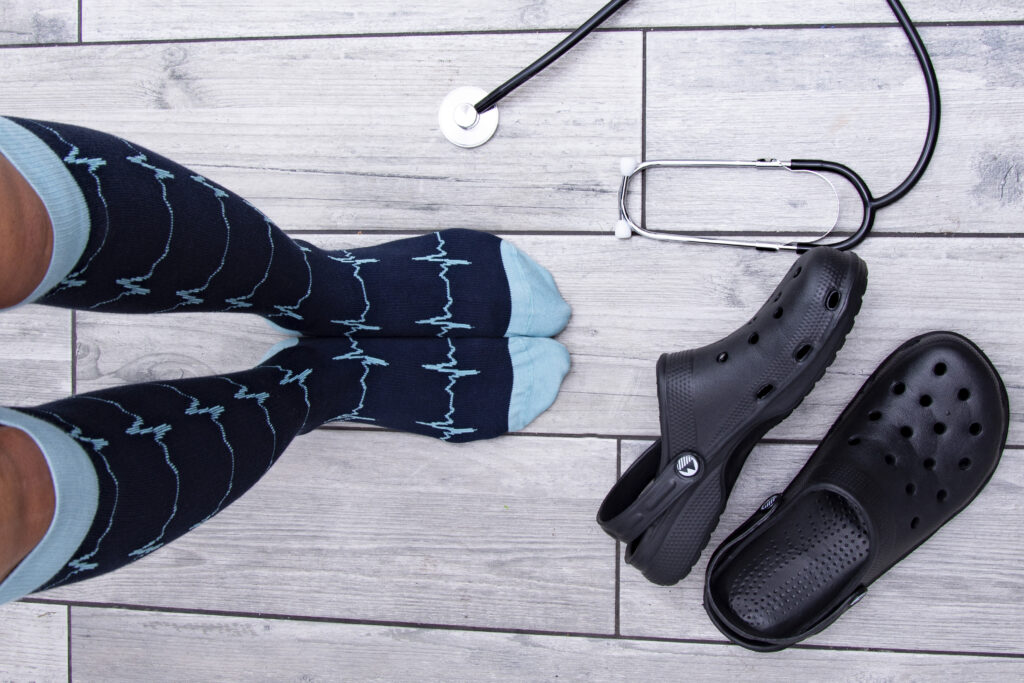Why do Nurses Wear Compression Socks?
Nurses are constantly on their feet, tirelessly rushing from one patient to another. In recent years, you may have noticed a stylish addition to their uniform – compression socks for nurses. Beyond their stylish appearance, these socks serve a vital purpose in a nurse’s daily routine.
Why Are Nurses Wearing Compression Socks?
Alleviating Leg Fatigue: Long shifts on hard hospital floors can lead to tired, achy legs. Compression socks provide relief by promoting better blood flow.
Preventing Varicose Veins: Nurses are at risk of developing varicose veins due to prolonged standing. Compression socks help maintain vein integrity.
Reducing Swelling: Long hours on their feet can cause fluid to accumulate in the lower extremities. Compression socks combat this swelling.
Lowering DVT Risk: Nurses often work extended shifts, which can increase the risk of Deep Vein Thrombosis (DVT). Compression socks help mitigate this risk.
What are the Benefits of Compression Socks for Nurses?
Improved Circulation: Compression socks gently squeeze the legs, aiding blood flow from the feet back to the heart. This prevents blood from pooling and decreases the risk of clot formation.
Varicose Vein Prevention: Compression socks help maintain the integrity of veins, reducing the likelihood of developing varicose veins, a common issue among nurses.
Swelling Management: Nurses often may experience edema or swelling in the lower legs. Compression socks combat this by encouraging fluid to move out of the legs and back into circulation.
DVT Risk Reduction: Long hours of standing or sitting increase the risk of DVT. Compression socks provide a simple yet effective preventive measure.
Enhanced Comfort: Many compression socks are designed with stretchable fabric such as soft cotton, offering additional comfort during those extended shifts.

Choosing the Right Compression Socks
-
Compression Level: Moderate compression levels (14-17mmHg) are appropriate for everyday use. However, if you have any ongoing medical conditions or issues, we recommend discussing them with your GP.
-
Proper Fit: Ensure a proper fit by measuring your legs to determine the right size. Ill-fitting compression socks may not provide the intended benefits.
-
Style and Design: Choose compression socks that match your style and comfort preferences. There are various lengths, colors, and patterns available.
-
Moisture Wicking Fabric: Look for socks made from stretchable materials to keep your feet dry and comfortable throughout your shift.
A Small Investment, Big Benefits
For nurses, who dedicate themselves to caring for others, compression socks are a small yet impactful investment in their well-being. These socks provide a simple solution to common challenges faced during long shifts, promoting comfort, health, and improved patient care. With a wide variety of styles and designs available, compression socks are not just practical but also a stylish addition to a nurse’s uniform.
As healthcare professionals, nurses deserve all the support they can get, and compression socks have proven to be an essential companion on their demanding journey.
Nurses Compression Socks FAQs
Should nurses wear compression socks?
Compression socks for nurses can help alleviate foot pain and swelling, as well as improve circulation for those who spend a lot of their day on their feet. Although nurses are commonly mentioned, many people who work in a medical or care setting can benefit from wearing compression socks including doctors, carers, paramedics, porters and more.
What mmHg compression socks for nurses?
It can vary from person to person, but most nurses should choose a compression sock with a compression level between 14-17mmHg. This will provide a good level of benefit while maintaining the comfort required for long-term, everyday wear. Explore our range of FITLEGS Life compression socks for nurses.
